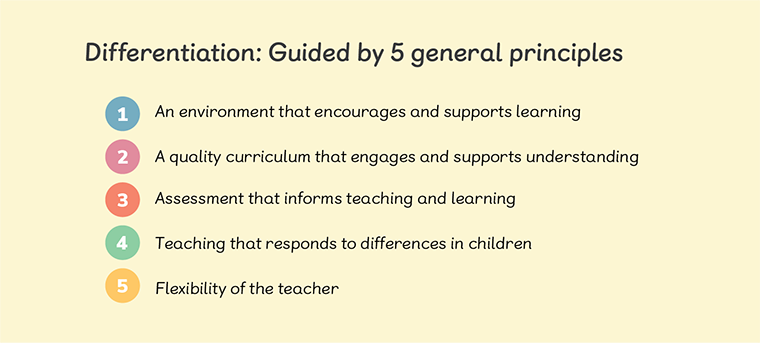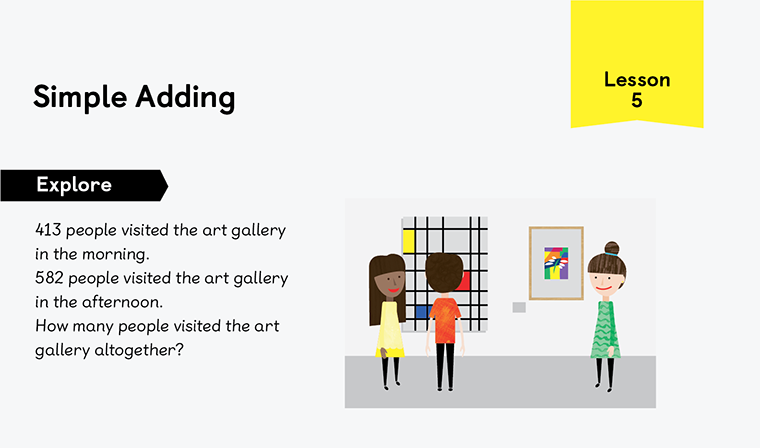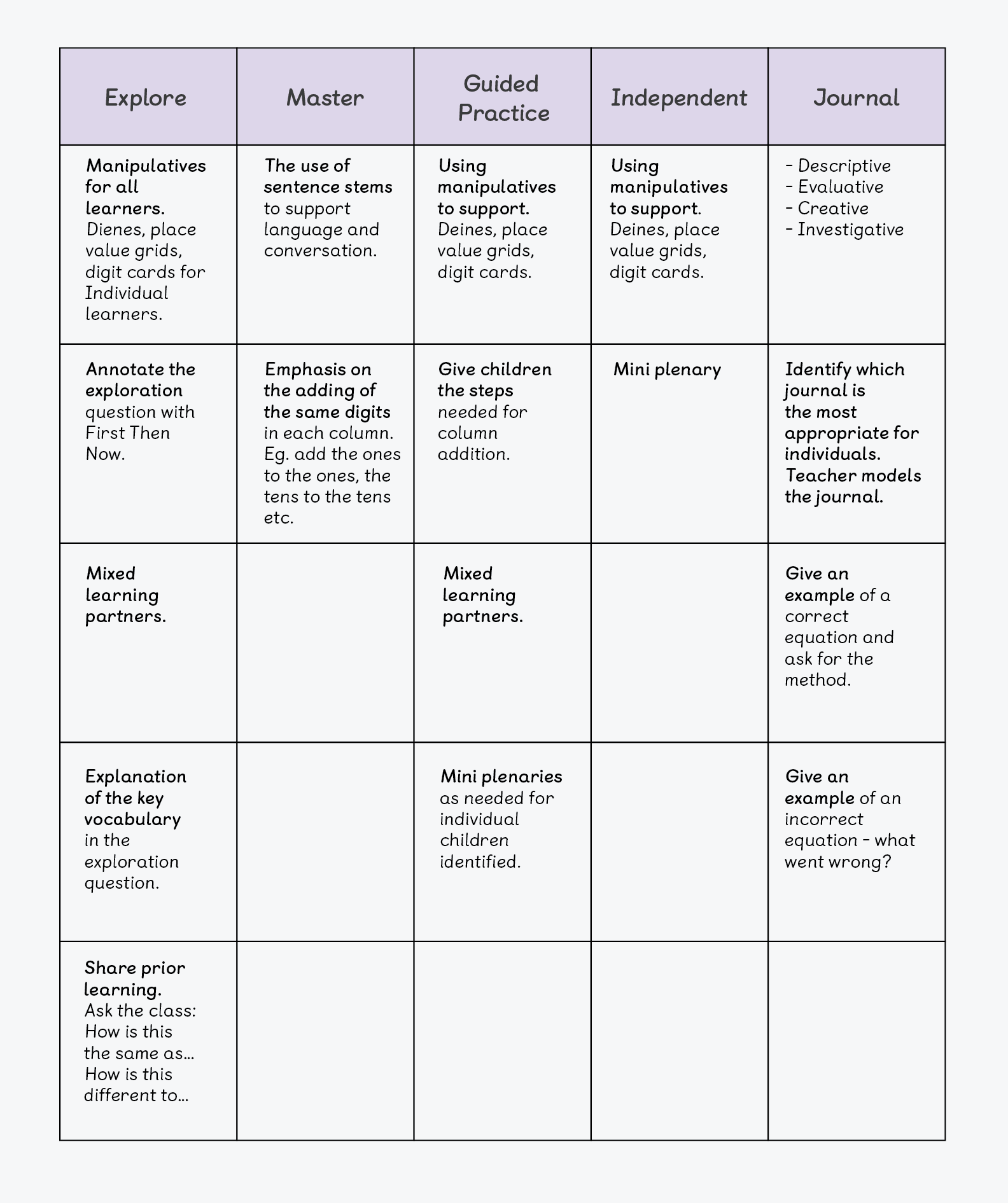How to differentiate a Maths — No Problem! Lesson
How do we keep the class together as we move through the learning while at the same time meeting the needs of all 30 children? If only there was a simple solution.
At the same time every year — probably about week 3 of the new school year, I seem to have at least one conversation with a member of staff about how to differentiate a Maths — No Problem! lesson. How do we keep the class together as we move through the learning, while at the same time meeting the needs of all 30 children? If only there was a simple solution.
Let’s begin with differentiation itself. The book How to Differentiate Instruction in Academically Diverse Classrooms by Carole Ann Tomlinson describes how we should aim high for all pupils — they can all do it, but some may take a little longer than others. She shares her five principles of differentiation:

She then goes on to describe the ways in which teachers can differentiate through:
- Content
- Process
- Product
- Environment
How to differentiate to meet the needs of individual pupils
As part of our continuing professional learning at Sandringham, part of our recent INSET training was to think about these principles and practices and consider how each part of the Maths — No Problem! lesson could be differentiated to meet the needs of individuals within the class. We split the lesson into five parts:
- Explore
- Master
- Guided practice
- Independent practice
- Journal
We then considered how we could keep the class together as we moved through the lesson while still providing support for all learners.
The lesson we focused on was Year 3: Simple Adding, Lesson 5.

The table below shows our thoughts and suggestions for supporting all learners during each part of the lesson.

Usually during Continuous Professional Learning sessions, our staff sit in year groups — we are a large, four-form entry school — however the decision was made to sit our staff according to experience. This was done to offer support to our early career teachers.
There were rich learning conversations to be heard between members of staff who wouldn’t normally be working together and outcomes from the session have been positive with teachers feeling more equipped to differentiate the Maths — No Problem! lessons.
Ask Dufour’s four critical questions
The final thing we looked at during the INSET training was some of the work of Richard Dufour. He shared four questions that should be considered by the teacher when planning a unit of learning — or, in fact, an individual lesson.
The questions help the teacher to focus their thinking towards individuals within the class and focus on the critical mathematical learning of the lesson and how best to support this.

At Sandringham, we have added these questions to the top of our planning formats to support the planning process and keep in mind how we are meeting the needs of all our learners.
References
Tomlinson, Carol Ann (2017), ASCD, How to Differentiate Instruction in Academically Diverse Classrooms
